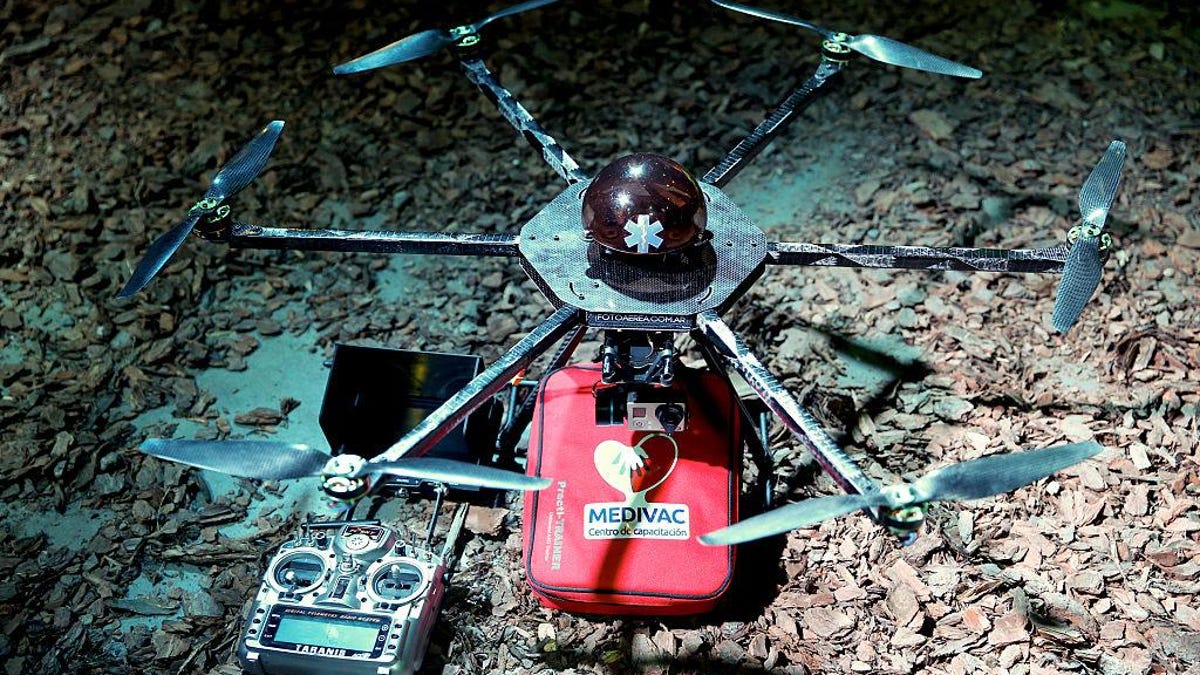Ambulance drones are faster than emergency services
A study finds that drones equipped with defibrillators can reach patients more quickly than ground-based emergency medical services.

An ambulance drone, like this one from Argentine companies Argendrone and Medivac, could save your life.
The use of drones to reach patients could help cut down on one crucial aspect of emergency care: response times.
A drone unveiled in 2014 offered the possibility of providing much quicker care to heart attack victims by coming equipped with a defibrillator -- and now, the concept has passed the first test.
By staging a series of simulated cardiac arrests around the city of Stockholm, Sweden, a team of researchers led by Andreas Claesson of the Karolinska Institutet demonstrated that drones can cut response time by a median of 16 minutes. Their research has been published in the Journal of the American Medical Association.
"Some 800,000 people suffer a cardiac arrest in the EU every year, and only 8 percent survive," said Alec Momont, who developed the original drone in 2014.
"The main reason for this is the relatively long response time of the emergency services (approx. 10 minutes), while brain death and fatalities occur within four to six minutes. The ambulance drone can get a defibrillator to a patient inside a 12 km2 zone within one minute. This response speed increases the chance of survival following a cardiac arrest from eight percent to 80 percent."
The drone for Claesson's tests was equipped with an automatic external defibrillator (AED) weighing 0.8 kilograms (1.7 pounds), a GPS, a high-definition camera and autopilot software. It was placed at a fire station, and deployed to 18 simulated cardiac arrests within a 10-kilometre (6.2-mile) radius, all at locations where real cardiac arrests had taken place between 2006 and 2014.
Whenever the remotely operated drone was deployed, the team would also send an ambulance.
The drone was faster. The median time from call to dispatch of the ambulance was three minutes, compared to three second for the drone. The median time from dispatch to arrive was 22 minutes for the ambulance, and just 5 minutes and 22 seconds for the drone. The median reduction in response time was 16 minutes and 39 seconds.
"Saving 16 minutes is likely to be clinically important. Nonetheless, further test flights, technological development, and evaluation of integration with dispatch centers and aviation administrators are needed," the study reads. "The outcomes of out-of-hospitcal cardiac arrest using the drone-delivered AED by bystanders vs resuscitation by EMS should be studied."
There are some limitations to the study. All the test flights, of which there were only 18, were conducted in good weather, and all were over short distances. And it didn't take into account what happens after the drone reaches the patient, which would require a person present who is able to operate the defibrillator.
Momont's 2014 system's solution to this problem was to equip his drone with a livestream audio and video connection so that a trained operator could walk a bystander through the process of using the equipment.
Logging Out: Welcome to the crossroads of online life and the afterlife.
Virtual reality 101: CNET tells you everything you need to know about VR.

